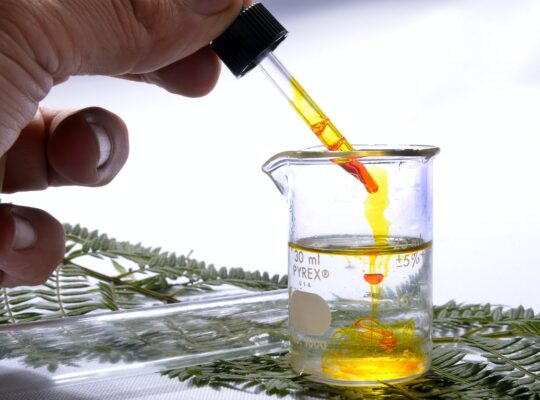Endoskeleton
An endoskeleton consists of hard, mineralized structures located within the soft tissue of organisms. An example of a primitive endoskeletal structure is the spicule of sponges. The bones of vertebrates are composed of tissues, whereas sponges have no true tissues. Endoskeletons provide support for the body, protect internal organs, and allow for movement through the contraction of muscles attached to the skeleton.

The human skeleton is an endoskeleton that consists of 206 bones in the adult. It has five main functions: providing support to the body, storing minerals and lipids, producing blood cells, protecting internal organs, and allowing for movement. The skeletal system in vertebrates is divided into the axial skeleton (which consists of the skull, vertebral column, and rib cage), and the appendicular skeleton (which consists of the shoulders, limb bones, the pectoral girdle, and the pelvic girdle).
Human Axial Skeleton
The axial skeleton forms the central axis of the human body and consists of the skull, vertebral column, and thoracic cage.
Key Points
- The axial skeleton provides support and protection for the brain, spinal cord, and the organs in the ventral body cavity; it also provides a surface for the attachment of muscles, directs respiratory movements, and stabilizes portions of the appendicular skeleton.
- The bones of the skull are divided into cranial bones and facial bones; their main roles consist of supporting the structures of the face and protecting the brain.
- The vertebral column protects the spinal cord, supports the head, and acts as an attachment point for the ribs and muscles of the back and neck.
- The thoracic cage’s most notable role is in breathing; however, it also protects the organs of the thoracic cavity, provides support for the shoulder girdles and upper limbs, and functions as the attachment point for the diaphragm, muscles of the back, chest, neck, and shoulders.
Key Terms
- intervertebral disc: a disc between the vertebra in the spine
- ossicle: a small bone (or bony structure), especially one of the three of the middle ear
- convex: curved or bowed outward like the outside of a bowl, sphere or circle
- vertebral column: the series of vertebrae that protect the spinal cord; the spinal column
- concave: curved or bowed inward like the inner surface of a sphere or bowl
Human Axial Skeleton
The axial skeleton forms the central axis of the human body and includes the bones of the skull, the ossicles of the middle ear, the hyoid bone of the throat, the vertebral column, and the thoracic cage (ribcage). The function of the axial skeleton is to provide support and protection for the brain, spinal cord, and organs in the ventral body cavity. It also provides a surface for the attachment of muscles that move the head, neck, and trunk; performs respiratory movements; and stabilizes parts of the appendicular skeleton, which will be discussed later.

The Skull
The bones of the skull support the structures of the face and protect the brain. The skull consists of 22 bones, which are divided into two categories: cranial bones and facial bones. The cranial bones are eight bones that form the cranial cavity, which encloses the brain and serves as an attachment site for the muscles of the head and neck. The eight cranial bones include the frontal bone, two parietal bones, two temporal bones, the occipital bone, the sphenoid bone, and the ethmoid bone.

Fourteen facial bones form the face, provide cavities for the sense organs (eyes, mouth, and nose), protect the entrances to the digestive and respiratory tracts, and serve as attachment points for facial muscles. The 14 facial bones are the nasal bones, maxillary bones, zygomatic bones, palatine, vomer, lacrimal bones, inferior nasal conchae, and mandible.

The auditory ossicles of the middle ear transmit sounds from the air as vibrations to the fluid-filled cochlea. The auditory ossicles consist of six bones: two malleus bones, two incus bones, and two stapes, one of each on each side. These bones are unique to mammals.
The hyoid bone lies below the mandible in the front of the neck. It acts as a movable base for the tongue and is connected to muscles of the jaw, larynx, and tongue. The mandible articulates with the base of the skull, controlling the opening to the airway and gut. In animals with teeth, the mandible brings the surfaces of the teeth in contact with the maxillary teeth.
The Vertebral Column
The vertebral column, or spinal column, surrounds and protects the spinal cord, supports the head, and acts as an attachment point for the ribs and muscles of the back and neck. The adult vertebral column is comprised of 26 bones: the 24 vertebrae, the sacrum, and the coccyx bones. In the adult, the sacrum is typically composed of five vertebrae that fuse into one. We begin life with approximately 33 vertebrae, but as we grow, several vertebrae fuse together. The adult vertebrae are further divided into the 7 cervical vertebrae, 12 thoracic vertebrae, and 5 lumbar vertebrae.

Each vertebral body has a large hole in the center through which the nerves of the spinal cord pass. There is also a notch on each side through which the spinal nerves, which serve the body at that level, can exit from the spinal cord. The names of the spinal curves correspond to the region of the spine in which they occur. The thoracic and sacral curves are concave, while the cervical and lumbar curves are convex. The arched curvature of the vertebral column increases its strength and flexibility, allowing it to absorb shocks like a spring.
Intervertebral discs composed of fibrous cartilage lie between adjacent vertebral bodies from the second cervical vertebra to the sacrum. Each disc is part of a joint that allows for some movement of the spine, acting as a cushion to absorb shocks from movements, such as walking and running. Intervertebral discs also act as ligaments to bind vertebrae together. The inner part of discs, the nucleus pulposus, hardens as people age, becoming less elastic. This loss of elasticity diminishes its ability to absorb shocks.
The Thoracic Cage
The thoracic cage, also known as the ribcage, is the skeleton of the chest. It consists of the ribs, sternum, thoracic vertebrae, and costal cartilages. The thoracic cage encloses and protects the organs of the thoracic cavity, including the heart and lungs. It also provides support for the shoulder girdles and upper limbs, and serves as the attachment point for the diaphragm, muscles of the back, chest, neck, and shoulders. Changes in the volume of the thorax enable breathing.

The sternum, or breastbone, is a long, flat bone located at the anterior of the chest. It is formed from three bones that fuse in the adult. The ribs are 12 pairs of long, curved bones that attach to the thoracic vertebrae and curve toward the front of the body, forming the ribcage. Costal cartilages connect the anterior ends of the ribs to the sternum, with the exception of rib pairs 11 and 12, which are free-floating ribs.
Human Appendicular Skeleton
The human appendicular skeleton is composed of the bones of the upper limbs (which function to grasp and manipulate objects) and the lower limbs (which permit locomotion). It also includes the pectoral (or shoulder) girdle and the pelvic girdle, which attach the upper and lower limbs to the body, respectively.

The Pectoral Girdle
The pectoral girdle bones, providing the points of attachment of the upper limbs to the axial skeleton, consists of the clavicle (or collarbone) in the anterior, as well as the scapula (or shoulder blades) in the posterior. The clavicles, S-shaped bones that position the arms on the body, lie horizontally across the front of the thorax (chest) just above the first rib.

The scapulae are flat, triangular bones that are located at the back of the pectoral girdle. They support the muscles crossing the shoulder joint. The spine runs across the back of the scapula; it is a good example of a bony protrusion that facilitates a broad area of attachment for muscles to bone.
The Upper Limbs
The upper limbs contain 30 bones in three regions: the arm (shoulder to elbow), the forearm (ulna and radius), and the wrist and hand. The humerus is the largest and longest bone of the upper limb and the only bone of the arm. It articulates (joins) with the scapula at the shoulder and with the forearm at the elbow. The forearm, extending from the elbow to the wrist, consists of two bones: the ulna and the radius. The radius, located along the lateral (thumb) side of the forearm, articulates with the humerus at the elbow. The ulna, located on the medial aspect (pinky-finger side) of the forearm, is longer than the radius. It articulates with the humerus at the elbow. The radius and ulna also articulate with the carpal bones and with each other, which in vertebrates enables a variable degree of rotation of the carpus with respect to the long axis of the limb. The hand includes the eight bones of the carpus (wrist), the five bones of the metacarpus (palm), and the 14 bones of the phalanges (digits). Each digit consists of three phalanges, except for the thumb, which, when present, has only two.

The Pelvic Girdle
The pelvic girdle attaches to the lower limbs of the axial skeleton and is responsible for bearing the weight of the body and for locomotion. It is securely attached to the axial skeleton by strong ligaments. It also has deep sockets with robust ligaments to securely attach the femur to the body. The pelvic girdle is further strengthened by two large hip bones. In adults, the hip bones are formed by the fusion of three pairs of bones: the ilium, ischium, and pubis. The pelvis joins together in the anterior of the body the pubic symphysis joint and with the bones of the sacrum at the posterior of the body.
The Lower Limbs
The lower limbs consist of the thigh, the leg, and the foot. The bones of the lower limb are the femur (thigh bone), patella (kneecap), tibia and fibula (bones of the leg), tarsals (bones of the ankle), and metatarsals and phalanges (bones of the foot). The bones of the lower limbs are thicker and stronger than the bones of the upper limbs because of the need to support the entire weight of the body along with the resulting forces from locomotion.

The femur, or thighbone, is the longest, heaviest, and strongest bone in the body. The femur and pelvis form the hip joint at the proximal end. At the distal end, the femur, tibia, and patella form the knee joint. The patella, or kneecap, is a triangular bone that lies anterior to the knee joint; it is embedded in the tendon of the femoral extensors (quadriceps). It improves knee extension by reducing friction. The tibia, or shinbone, is a large bone of the leg that is located directly below the knee. The tibia articulates with the femur at its proximal end, with the fibula and the tarsal bones at its distal end. As the second-largest bone in the human body, it is responsible for transmitting the weight of the body from the femur to the foot. The fibula, or calf bone, parallels and articulates with the tibia. It is not weight-bearing but acts as a site for muscle attachment while forming the lateral part of the ankle joint.
The tarsals are the seven bones of the ankle, which transmit the weight of the body from the tibia and the fibula to the foot. The metatarsals are the five bones of the foot, while the phalanges are the 14 bones of the toes.

References
https://courses.lumenlearning.com/boundless-biology/chapter/types-of-skeletal-systems/
Also Read:
Chapter – 4. Osseous System – RecNotes







